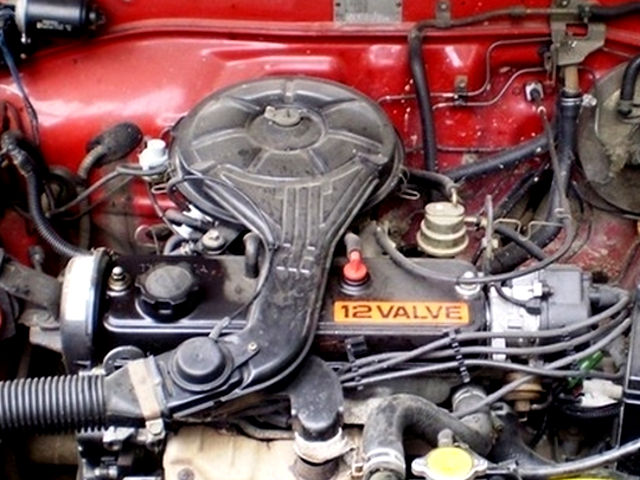Explore the most up to date Fads in Engine Modern Technology Through Tazz
In the quickly advancing landscape of automotive innovation, Tazz stands at the leading edge, highlighting substantial advancements in engine systems that prioritize both development and sustainability. tazz. From hybrid engines that enhance gas performance to the development of hydrogen fuel cells, the patterns shaping contemporary powertrains are not just improving performance however likewise addressing crucial ecological obstacles. As the industry remains to push limits, it is necessary to take into consideration exactly how these growths will certainly affect future transport services and the more comprehensive effects for global power intake. What exists ahead in this essential improvement?
Hybrid Engine Innovations
Crossbreed engine advancements represent a crucial shift in automobile technology, incorporating the benefits of internal burning engines with electric propulsion systems. This assimilation not only boosts fuel efficiency yet likewise reduces exhausts, meeting significantly rigid environmental guidelines. By utilizing both power sources, hybrid engines can maximize performance, supplying power when needed while preserving fuel throughout less requiring motoring conditions.
Recent improvements in crossbreed innovation consist of improvements in battery performance and regenerative braking systems. These developments enable higher power recuperation during slowdown, which can be rerouted to assist in velocity or power accessory systems. Additionally, suppliers are focusing on small designs and lightweight materials to optimize the effectiveness of crossbreed powertrains.
The growth of plug-in crossbreeds has likewise broadened the marketplace, making it possible for drivers to charge their automobiles using typical electric outlets. This function usually enables significant all-electric range, further decreasing dependancy on conventional fuels. tazz. As the vehicle sector remains to advance, hybrid engine technologies are expected to play an essential role in bridging the gap between conventional vehicles and fully electric versions, giving a transitional remedy that deals with varied customer requirements and preferences
Developments in Electric Powertrains
The automobile landscape is quickly developing, with electric powertrains becoming a leading pressure in lasting transportation. Advancements in electric lorry (EV) modern technology are dramatically improving performance, efficiency, and customer experience. Key technologies consist of improvements in battery chemistry, which have actually boosted energy thickness, decreased billing times, and prolonged overall battery life.
Solid-state batteries, as an example, guarantee to revolutionize the market by supplying better security and efficiency contrasted to standard lithium-ion cells. Developments in regenerative braking systems are making it possible for lorries to recover energy during deceleration, adding to overall efficiency.
In enhancement to battery modern technology, electrical motor layouts are coming to be much more sophisticated. Innovations such as integrated motors and progressed thermal monitoring systems are assisting to maximize power shipment and minimize weight, eventually boosting vehicle dynamics.

Collectively, these developments emphasize the commitment to transition towards cleaner, extra effective transportation options, placing electric powertrains at the leading edge of auto development.
The Rise of Hydrogen Gas Cells
Significantly, hydrogen fuel cells are getting grip as a viable alternative to standard internal combustion engines and battery electrical vehicles. This technology takes advantage of the chemical power saved in hydrogen, transforming it into electrical energy with an electrochemical response with oxygen. The primary result of this process is water, making hydrogen fuel cells an environmentally friendly alternative with absolutely no discharges at the tailpipe.

Car manufacturers are increasingly investing in hydrogen gas cell modern technology, recognizing its potential for long-range applications and fast refueling capacities that measure up to conventional fuels. Furthermore, markets such as sturdy transport and public transportation are specifically fit for hydrogen gas cells, where battery electric solutions may fall short because of weight and variety restrictions.
As study and financial investment proceed to expand, hydrogen fuel cells are poised to play a considerable function in the future landscape of tidy transport and power options.
Enhancements in Internal Burning Engines
Advancements in inner burning engine (ICE) modern technology are changing typical vehicles to meet modern environmental standards and efficiency assumptions. Among one of the most considerable enhancements includes the integration of advanced gas injection systems. These systems maximize the air-fuel combination, boosting burning effectiveness and leading to decreased emissions. Straight gas injection, for example, enables far better atomization of gas, bring about even more total combustion and boosted power result.
In addition, turbocharging has actually acquired prominence, permitting smaller sized engines to supply higher efficiency without the weight of larger engines - tazz. This technology not just boosts performance yet additionally adds to lower fuel intake. Variable shutoff timing systems are additionally being improved, enabling engines to adapt to different driving conditions for boosted torque and responsiveness
Additionally, making use of lightweight materials in engine building and construction is ending up being common, further boosting fuel performance by decreasing overall automobile weight. Engine control devices (ECUs) are significantly sophisticated, allowing real-time adjustments that enhance efficiency and emissions.
These enhancements jointly signify an essential change in ICE technology, lining up with international sustainability objectives while still offering the performance vehicle drivers expect from their cars. As the sector evolves, these renovations remain to form the future of typical automobile engineering.
Future Patterns in Engine Performance
Significant developments in engine effectiveness are prepared for as suppliers concentrate on integrating innovative innovations to fulfill stringent environmental regulations and consumer needs. The change towards electrification, crossbreed systems, and alternative fuels is reshaping the vehicle landscape, driving technologies that boost gas economy and reduce emissions.
One of the key trends is the implementation of advanced materials and manufacturing strategies. Light-weight compounds and high-strength alloys add to minimized automobile weight, therefore improving overall efficiency. In addition, the their explanation fostering of turbocharging and variable shutoff timing innovations permits enhanced power output from smaller sized engines, better boosting fuel economy.

Final Thought
Finally, the expedition of engine technology reveals significant advancements that focus on sustainability and performance. Advancements in hybrid engine systems, electrical powertrains, and hydrogen fuel cells demonstrate a dedication to decreasing exhausts while improving efficiency. Improvements in interior combustion engines and an emphasis on light-weight products contribute to total engine effectiveness. As the vehicle industry proceeds to advance, these trends will play a crucial function in forming a cleaner and even more sustainable future for transportation.
From other hybrid engines that optimize gas efficiency to the emergence of hydrogen fuel cells, the patterns forming modern-day powertrains are not just boosting efficiency yet also dealing with vital ecological difficulties.Crossbreed engine technologies stand for a crucial change in automobile technology, incorporating the advantages of inner burning engines with electrical propulsion systems.In addition, turbocharging has actually gotten prestige, enabling smaller engines to supply greater efficiency without the weight of larger engines. Furthermore, the adoption of turbocharging and variable valve timing innovations enables for improved power output from smaller sized engines, better boosting gas economic climate.
Enhancements in inner burning engines and an emphasis on lightweight materials add to total engine effectiveness.